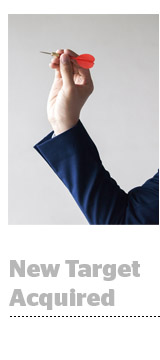
Demographic targeting and behavioral targeting have both been around since internet advertising’s early days, but big CPG brands now say behavioral targeting drives the biggest results online.
Instead of trying to hit in-target demos, they’re looking for more creative ways to connect with consumers based on purchase history or interests.
At Dmexco, Johnson & Johnson CMO Alison Lewis told attendees the marketing department used to do demographic targeting to get reach and has since shifted to targeting behaviors and audiences with dynamic messages.
For instance, the CPG created morning- and evening-specific ad creatives for its Aveeno products, resulting in a 7% sales lift, Lewis told the audience.
Likewise, P&G is “reducing annoying frequency and serving ads only when someone is receptive,” the company’s chief brand officer, Marc Pritchard, told attendees.
It’s easy to see why CPGs are moving away from demographic targeting, which has quality issues. Many segments are built probabilistically, and they’re available to anyone willing to pay for it.
“The question is how differentiated it is,” said Frances Ralston-Good, UK CEO of Hearts & Sciences. “The advantage is gone if everyone has the advantage.”
For that reason, agencies and advertisers are now working directly with parties that have unique data – whether it’s a publisher, ecommerce partner or platform like Facebook –to build unique behavioral segments.
Pritchard told Dmexco attendees P&G works with “Amazon and Alibaba to use unique ID data to reach consumers closer to when they’re ready to buy.” Behavioral targeting, along with frequency capping, is reducing waste by 20%, he said.
And Facebook develops custom audiences for Essence UK, so the agency can find users whose mobile phone plans are close to expiring.
“There are new affinities, new life moments and new targeting options popping up all the time,” said Ryan Storrar, head of media activation at Essence UK. “We have a massive test and learn culture where we need to trial, learn and measure the effectiveness of these segments.”
This post was syndicated from Ad Exchanger.

More Stories
The Trade Desk’s OpenPass Adds Rewards As It Pursues Wider Adoption
NZME’s work recognised at INMA Global Media Awards
Leading Brand Transformation: A Masterclass With Doug Zarkin